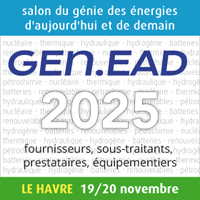fév.
11
2009 | Petrobras presents its business plan for the Gas & Energy area
Investments in the order of $10.6 billion have been foreseen for Petrobras’ Gas & Energy area in the Company’s 2009-2013 Business Plan (BP), 70% more than the amount set aside in the 2008-2012 BP ($6.2 billion).
Of the total planned for investment between 2009 and 2013, $5.2 billion will be in new projects, while $5.4 billion in projects already in progress. The goal is to reinforce the company's leadership in the Brazilian natural gas market, with international performance, and to boost the power generation business in the country, allowing for flexibility not only in supply and in meeting demand, but in the supplying the thermal and non-thermal markets.
Of the investments laid out in the 2009-2013 BP, $8.2 billion will be allocated to completing the Southern and Northeastern network expansion construction work and to building new liquefied natural gas (LNG) terminals, while $2.4 billion will be invested in building thermoelectric plants and small hydroelectric plants (SHPs) and in participation in new electric energy businesses, including eolian plants.
Supply
For 2013, Petrobras’ goal is to supply a demand of 135 million cubic meters per day of natural gas. This volume will be distributed as follows: 49 million cubic meters per day for the thermoelectric market; 41 million cubic meters per day for the industrial sector; and 45 million cubic meters per day for other areas (vehicle, residential, commercial, and for internal Downstream area consumption). In 2008, the total natural gas consumption was 58 million cubic meters per day. From 2009 to 2013, the domestic natural gas production is slated to surge from 32 million cubic meters per day to 73 million cubic meters per day.
To meet the demand projected for 2013, Petrobras’ goal is to supply 73 million cubic meters per day coming from domestic production, to continue importing 30 million cubic meters per day from Bolivia, and to complement the supply with 32 million cubic meters per day via LNG.
2009-2013 BP Strategies
The 2009-2013 BP strategies for the Gas & Energy segment are to:
- Add value to the use of natural gas in monetizing Petrobras’ reserves;
- Ensure flexibility to market natural gas in the thermoelectric and non-thermoelectric markets;
- Balance the competitiveness and profitability of natural gas compared to competing sources of energy;
- Perform in a global, verticalized manner in the LNG market;
- Consolidate the electric energy business competitively and profitably, optimizing the power generation park; and to
- Invest in electric energy generation from renewable sources.
The 2009-2013 BP includes actions that will complete the first cycle of the Gas & Energy area, created in 2000. This first cycle, scheduled to be wrapped-up in 2010, is marked by the deployment of projects that will allow for the consolidation of natural gas in the Brazilian power matrix, a fact that has been driven by the Bolivia-Brazil (Gasbol) Gas Pipeline going on stream, by the increased consumption in the non-thermoelectric market in this period, by the diversification of the sources of supply, via LNG terminals, and through the increase in the electric energy generation park.
The first step taken at Petrobras was to grow the installed power generation capacity, with the completion, by 2004, of projects that were part of the Thermoelectric Plant Priority Program (PPT) and, later, with the construction and incorporation of new plants fueled by natural gas, diesel fuel, and fuel oil, already in the new electrical sector hiring model – the Regulated Hiring Environment (ACR), set forth by Law 10848, enacted in 2004.
In this first cycle, investments were made to increase the domestic gas supply – such as the Plangás –, to enhance and integrate the gas pipeline network, and to deploy Brazil’s first two LNG regasification terminals.
The gas pipeline network grew from a total of 5,451 km in 2003, to 6,933 km in 2008. By 2010, it is planned to reach 9,228 km. The electric energy generation park, which closed 2008 with 5,899 MW of installed capacity, will be able to produce 7,135 MW in 2010. The Pecém LNG terminal (7 million cubic meters per day) is in commercial operation; and the Guanabara Bay terminal (up to 20 million cubic meters per day) is currently in its testing phase.
The Gas & Energy area’s second cycle of investments will be marked by the expansion in the natural gas supply to new thermoelectric plants with the option of placing gas in the domestic and foreign markets by liquefying it.
The 2009-2013 BP calls for investments to flow pre-salt production, to build new LNG terminals, and construct and plants to generate electric energy.
New natural gas and electric energy projects
Among the new natural gas area projects, the highlight is the construction of new LNG terminals. The third one, with capacity for 14 million cubic meters per day, is slated to go online by 2013, while the fourth immediately thereafter.
Other projects will be developed in this period, such as the floating liquefaction unit, called “embarked LNG,” a logistics option to transport pre-salt gas, sending its production to the regasification terminals installed on the Brazilian coast and even for exports in periods during which thermoelectric demand is low or when the domestic market, the so-called secondary or spot market, does not demand additional volumes for given periods.
Another project that is under development aiming at maturing the integration between the natural gas and electric energy sectors is the onshore LNG plant. This unit – to be used to import, store, and export LNG to the domestic and foreign markets – will be designed to balance and optimize the volatility in the natural gas operations for thermoelectric generation.
The construction of more than 307 km of gas pipelines and the installation of compression stations are also foreseen. The goal is to allow the outflow of pre-salt production and to buttress the transportation capacity of the network that already exists in the Southeast and in the Northeast. These new projects will demand investments in the order of $3.7 billion in the 2009-2013 period.
In the energy area, Petrobras plans to consolidate its participation as an agent in this market, participating in future electric energy auctions, balancing the natural gas generation competitiveness/profitability binomial. The company’s strategy also includes investing in renewable sources.
To guide its performance in the energy businesses, the Company can participate as a supplier of natural gas to plants belonging to third-parties, as a logistics service provider (LNG shipping, LNG/CNG regasification, and CNG transportation), and as an electric energy generator via its own units, or in a combination of the mentioned options, also considering seeking strategic partnerships with other agents. Investments in new projects in the electric energy segment add up to $1.4 billon.
In 2013, the commitments Petrobras will take on, as an electric energy generator and natural gas supplier to thermoelectric plants. will reach 8,787 MW. Of this total, 6,659 MW include existing energy, in addition to 2,128 MW to be derived from the A-3 and A-5 power auctions carried out in 2007 and 2008.
Natural gas and electric energy projects in progress
In the projects in progress portfolio, the 2009-2013 Business Plan includes the completion of 10 gas pipeline construction jobs (2,543 km in length), the installation of new compression stations and points of delivery, and the enhancement of the capacity of the Bolivia-Brazil gas pipeline (Gasbol) between São Paulo and Paraná by means of new compression stations. The company is expected to invest $4.52 billion in these projects.
Among the main projects in progress is the third and last section of the Southeast-Northeast Gas Pipeline (Gasene), the Cacimbas (ES) - Catu (BA), measuring 946 km in length. In total, 53% of the project’s construction and assembly have already been completed, and the project is hoped to be wrapped-up in the first half of 2010. The project will allow the two regions’ networks to be interconnected.
Construction work for five SHPs (125.4 MW), five thermoelectric plants (to run on natural gas, diesel fuel and fuel oil, totaling 973 MW), and the installation of combined cycles at two units (Luis Carlos Prestes, in Mato Grosso do Sul, with 262 MW; and Sepé Tiarajú, in Rio Grande do Sul, with 161 MW) will also be completed. These projects will require $926 million in investments.
Source : Communiqué PETROBRAS
Voir la fiche de l'entreprise PETROBRAS
| |
|
|






  
|